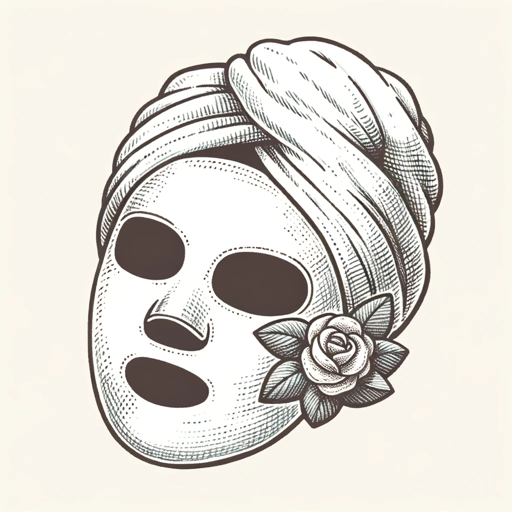痤疮治疗指南-acne treatment guidelines
AI-powered comprehensive acne care
什么是痤疮?
痤疮有哪些分级?
如何选择痤疮的外用药?
除了用外用药,痤疮还有什么治疗方法?
Related Tools
Load More
AI Beauty Assistant (Skincare Expert,Care Advisor)
🟢Analyze your face & body via photo🟢 Specializing in skincare, Makeup advice, tailored to your preferences, skin type, and beauty goals, Make up , beauty expert, beauty score,hair care, skin care , advanced, beauty routine, haircare , Derma , Dermatologis

Skin Doctor
Friendly Dermatology Expert with a witty touch.

Dermatology Advisor
Expert dermatologist GPT for patient care and medical education.

Skin Care Guide
A virtual dermatologist offering advice and guidance on skin care.

皮肤医生
中文的皮肤健康专家

NOAGE Advisor
Skincare Advisor for NOAGE Products and Holistic Skincare Routines.
20.0 / 5 (200 votes)
Introduction to Guideline for Diagnosis and Treatment of Acne
The 'Guideline for Diagnosis and Treatment of Acne (2019 Revised Edition)' provides a comprehensive framework for the diagnosis, classification, and treatment of acne. It addresses the high prevalence of acne, which affects over 95% of individuals at some point, with a significant impact on both physical and mental health. This guideline aims to standardize treatment approaches, ensuring evidence-based and effective therapies are used by clinicians. For example, the guideline includes specific recommendations for various severities of acne, from mild comedonal acne to severe nodulocystic acne, offering a clear path for treatment escalation based on patient response.

Main Functions of the Guideline
Diagnosis and Classification
Example
The guideline provides a detailed framework for classifying acne into different grades (I-IV) based on severity, which is crucial for determining the appropriate treatment plan.
Scenario
A dermatologist uses the classification criteria to determine that a patient with inflammatory papules and pustules has moderate (Grade III) acne and thus should be treated with a combination of oral antibiotics and topical retinoids.
Treatment Recommendations
Example
It offers step-by-step treatment options for each severity level of acne, including topical treatments for mild acne and systemic treatments for severe cases.
Scenario
For a patient with severe nodulocystic acne, the guideline recommends starting with oral isotretinoin, which can significantly reduce lesion count and prevent scarring.
Special Population Guidance
Example
Specific recommendations for treating acne in special populations such as pregnant women, children, and individuals with high androgen levels.
Scenario
A pregnant woman with acne is advised to avoid certain medications like retinoids and instead use safer alternatives such as topical clindamycin or azelaic acid.
Ideal Users of the Guideline
Dermatologists
Dermatologists benefit from the guideline as it provides evidence-based recommendations, ensuring they use the most effective treatments. The guideline helps standardize care, reducing variability in treatment approaches and improving patient outcomes.
General Practitioners
General practitioners can use the guideline to manage mild to moderate acne cases confidently. It offers clear treatment algorithms and advice on when to refer patients to specialists, ensuring timely and appropriate care.

How to Use the Acne Treatment Guidelines
Visit aichatonline.org for a free trial without login, also no need for ChatGPT Plus.
Go to the specified website to access the guidelines without needing an account or subscription.
Review the Table of Contents
Familiarize yourself with the different sections of the guidelines, including pathogenesis, classification, treatment options, and special considerations for different populations.
Identify Relevant Sections
Based on the patient's symptoms and severity of acne, locate the corresponding sections in the guidelines for specific treatment recommendations.
Follow Treatment Protocols
Adhere to the step-by-step treatment protocols outlined in the guidelines, ensuring to follow dosage instructions and monitor for any side effects.
Utilize Patient Education Resources
Incorporate the patient education and management strategies provided in the guidelines to improve treatment adherence and overall outcomes.
Try other advanced and practical GPTs
Code Optimizer
Enhance your code with AI-powered optimization.

PDF Assistant
AI-powered PDF Insights and Analysis

The Quran Companion
AI-powered insights for Quranic study.

ImageToLogo
AI-powered logo creation made simple.

Director 视频导演
AI-powered video production made easy.

Akinator
AI-powered character guessing game.

RED Expert
AI-powered assistant for Xiaohongshu excellence

Globe Travel Guide
AI-Powered Custom Travel Itineraries.

サービス名を考えるくん
AI-powered service naming made easy.

AI翻译官
AI翻译官: Your Bilingual Assistant

Code Translator
AI-Powered Code Translation Made Easy

Jiggie
Effortless UI Development with AI.

- Patient Education
- Classification
- Pathogenesis
- Topical Therapy
- Systemic Therapy
Detailed Q&A About Acne Treatment Guidelines
What is the purpose of the Acne Treatment Guidelines?
The guidelines aim to provide standardized, evidence-based recommendations for the diagnosis, classification, and treatment of acne to improve patient outcomes and ensure consistent care.
How are the treatment recommendations structured?
The guidelines are structured based on the severity and type of acne, with specific sections covering topical treatments, systemic treatments, physical and chemical therapies, and special considerations for various patient populations.
What are some common treatments recommended in the guidelines?
Common treatments include topical retinoids, benzoyl peroxide, antibiotics, hormonal treatments for women, and oral isotretinoin for severe cases. The guidelines also discuss the use of light and laser therapies and chemical peels.
How do the guidelines address treatment for special populations?
There are dedicated sections for treating acne in children, pregnant and breastfeeding women, and patients with specific conditions like polycystic ovary syndrome. These sections provide tailored recommendations to ensure safety and efficacy.
What role does patient education play in the guidelines?
Patient education is emphasized to enhance treatment adherence, manage expectations, and address lifestyle factors that can influence acne. The guidelines provide strategies for educating patients on skincare, diet, and mental health support.